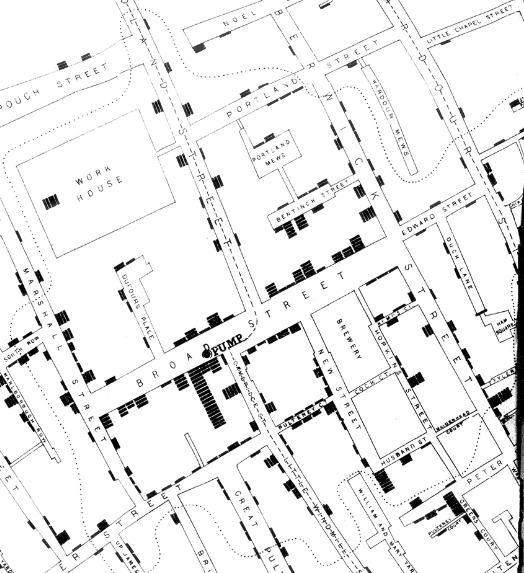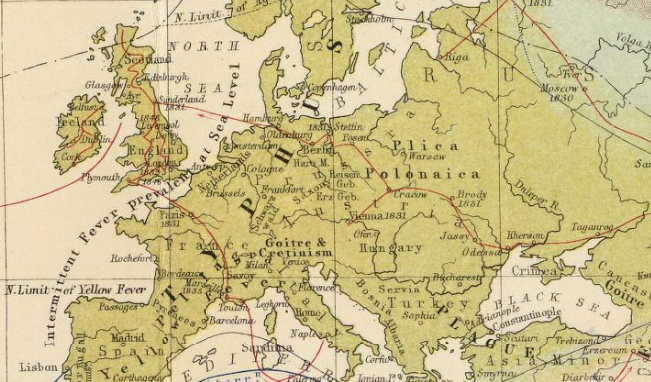The correlation between a single source and the spread of disease is a well documented phenomenon in the field of epidemiology especially when the spread is contained to a common area. This was very much the case in the cholera epidemic in 1850s London, where a doctor named John Snow was struggling to plead his case that the disease cholera was spread through water contaminated by sewage (Tuthill, 2003). It was not until Snow received testimony from a woman named Sarah Lewis who’s infant daughter contracted cholera from a pump outside of the Broad Street Pump where Snow had already determined as a source of cholera, that Snow was able to find the root cause of Cholera in the Broad Street Pump that had already affected so many (Tuthill, 2003). This is where one of the largest cholera outbreaks of the time was able to be traced to and this was detailed in the map below which also shows a couple of important details that made is possible to pinpoint the cause of the outbreak.

This not only shows the location of the Broad Street Pump but also highlights a brewery and a workhouse, both of which had no cholera infections that stemmed from either place because they each had their own pump within the areas which protected people from the dangers of the Broad Street Pump (Tuthill, 2003). However, the true killer of the cholera infection was the lack of sanitation present in cities during the 1800s at the high of a population boom due to the industrial revolution (Johnson). Human feces and corpses of all kinds littered the streets of London due to lack of a proper management of waste to serve the public that not only got rid of things like that while also keeping water clean (Johnson 2-3).

At the same time around the world there were other thinkers that were working on similar epidemiological finds to track the route of disease around worldwide. In comparison to John Snow’s method of tracking down the root source of an infection in a particular area, thinkers like Alexander Johnston in Edinburgh in a way that is more large picture. In Johnston’s depictions of the spread of disease it is seen as a linear storm moving from one area to the next, stopping in large cities to infect those with a disease like cholera and others being more stagnant in one geological area.
References:
Johnson, S. (2007). The ghost map. Riverhead Books.
Tuthill, K. (2003, November). John Snow and the Broad Street Pump: On the trail of an epidemic. UCLA Department of Epidemiology: Fielding School of Public Health. https://www.ph.ucla.edu/epi/snow/snowcricketarticle.html


And in a way, although we emphasized differences, in fact Johnstons map and Snows map could be read together right? Transmission between continents isn’t the same thing (and would require different types of mapping) as transmission within a neighborhood!